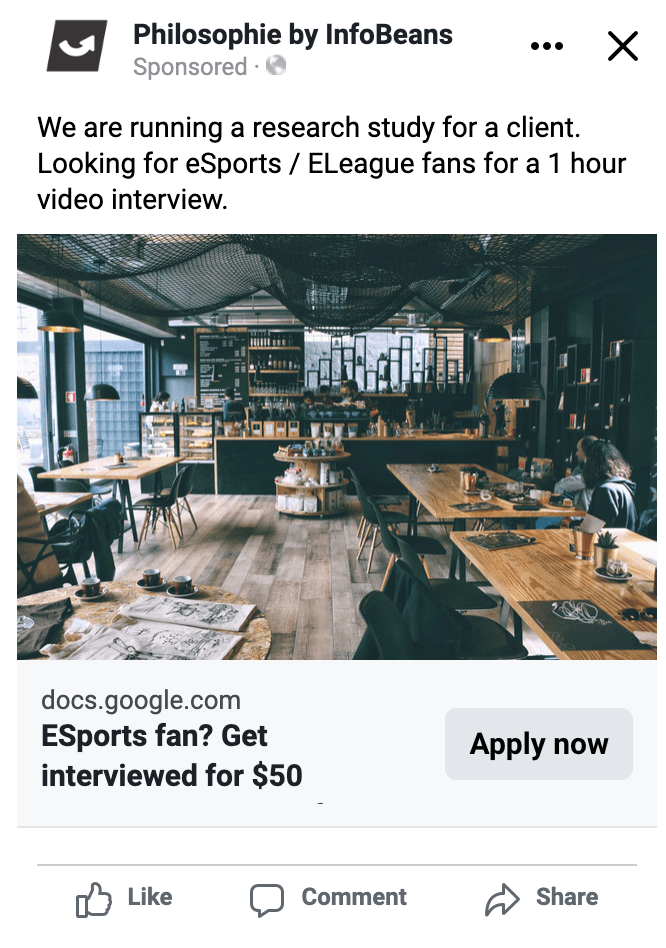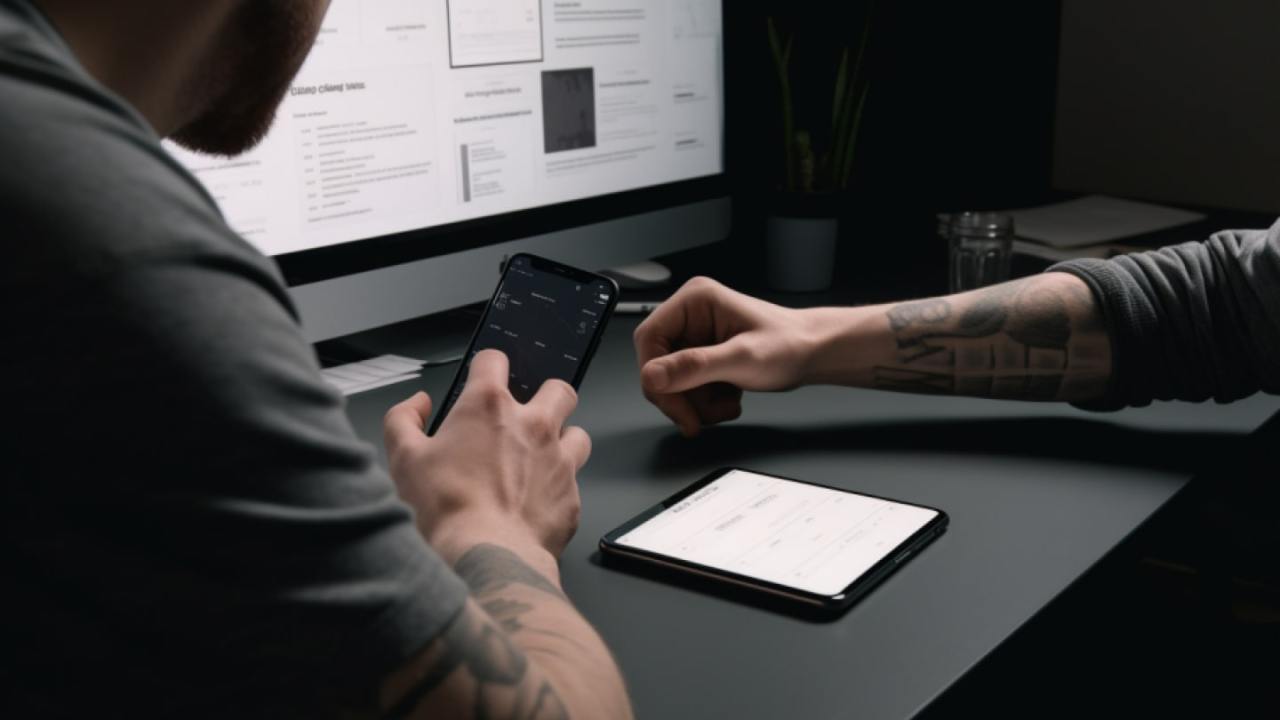Five creative ways to recruit users for research
You are ready to validate your work with real potential users. Awesome. The next question I often get is how do I find these users? How do you recruit them to speak with you?
Sometimes you just need to get creative. Over the years, we’ve used dozens of different methods. This post outlines five of our favorite methods. I hope one of these could work for you or inspire you to try something completely different for your next experiment.
Before you recruit
Two key steps need to happen before you recruit your interviewees:
- You need to know who your target user is
- You need to have an incentive structure in place
Who is your target user?
Ideally, by this point, you have some semblance of customer segments. Ideally, you’d have proto-personas or even fully-formed personas. It is OK if these artifacts aren’t super detailed because your interviews are going to provide more information that you can use.
You can build screeners from these segments and proto-personas. We recommend using your favorite form software (ie Google Forms or Typeform) to create these screeners. Capture contact information as well as a few key demographic questions that will help you determine if someone is a good fit for the research.
Your screener may evolve over time as you look to capture different types of users for different experiments.
Incentive structure
Your company will be gaining value from this research. And people’s time is worth something. Figure out what you are going to offer people who ultimately speak with you. The dollar amount should scale up based on the time you are asking from the person and how hard they are to find.
Ok, we’ve got some of the basics out of the way, now let’s get creative:
1. Social Ads Screener
I’m sure you have seen plenty of ads on Instagram, Facebook, and TikTok for D2C brands and other businesses. Researchers often don’t think how powerful these tools can be for recruiting users too! Spin up an advertising campaign on a social platform like Facebook and let people know that you will pay them for their time!
As third-party privacy collection has been restrained recently, this is not quite as easy as it used to be. Still, it is an effective strategy for consumer apps or broader customer segments.
Using the screener questionnaire you can weed out people who apply but are not a target match.
While working with a major media & entertainment company we were able to target people that had liked selected property pages on Facebook and serve those individuals with ads. It was very successful at quickly finding a lot of people who were a fit for our research from diverse backgrounds.

If you are aiming for a more targeted audience or a B2-B use case, it can make sense to try using LinkedIn ads. LinkedIn ads are more expensive. And perform less efficiently than Facebook’s. But they do have added power when recruiting people from certain job segments that you can’t find on other platforms.
For example, we were working with an AI Marketing startup that wanted to recruit CMOs. We were able to find our interview candidates using LinkedIn ads. And the best part was, it doubled as customer development as one of these interviewees turned into an actual paying customer!
And yes, this approach works even with highly regulated or compliant companies: Four Tips to Innovate in your Regulated Industry.
2. Guerilla User Research
“Rule No 1: There are no facts inside your building, so get outside”
This seminal quote sums it up – when push comes to shove, find your users where they frequent! This can be as easy as going to your local coffee shop and seeing who is willing to speak to you in return for a cup of coffee!
We were working on a Field Services project with a major consulting company and needed to learn more about a problem space. We needed to find people in the industry and fast for a tight deadline. So we got out of the building. We traveled to deep Brooklyn to visit warehouses and steel plants and politely asked to interview dispatchers and field engineers that worked there.
We called our Internet Service Provider and told them our office internet was broken (it has been broken A LOT over the previous few months) and had them send out a field technician to help solve it. We interviewed that field technician and he gave us the contact information of a few of his colleagues he thought would also like to help!
Sometimes you just need to get out of the building or think outside the box to find people to speak with.
3. Automated existing customer outreach
If you have an existing customer database, use it! Depending on what type of research you are doing, you can segment your users to further narrow down the set of people you want to target.
From that focused customer list, you can either send out batch messages or manual 1-1 reach outs.
While working with a leading wellness resort, we were looking to interview guests for a mobile app we were building. Our target persona for the app was a first-time guest. We worked with their internal reservations team to build an automated system to find guests who were coming to the ranch and had not been there before. Depending on our experiment, we then messaged these guests right after (or before) their stay on the property by sending out automated texts and emails with our request, the offer, and to schedule with us through the screener.
The key, in this case, was segmenting users correctly, messaging at the appropriate time, and finding a message that was both on brand and converted.
4. Customer Council
Sometimes your user base is small. In some B2B businesses, the end client is managed by a Customer Relationship Manager or equivalent role. Salespeople often are protective of their clients (and rightly so!). They may be resistant to sharing their relationship on early-stage product research. In these scenarios, you have to sell the sales person on the value of this research AND sell the end client on the value. One approach that we have seen work well in these scenarios is to form a “Customer Council” of clients who opt-in to participate in interviews. You may speak to these people a few times over the course of a project.
You still involve the owner of the relationship in the overall process (ideally not in the interview itself) so that there is a full sense of trust. You set proper expectations and goals for any interviews ahead of time.
We were working with a large international bank on a B2B cash management and treasury solution. We wanted to speak to their existing customers on our redesigned portal. Our target customers were CFOs or Treasurers of multi-national corporations. The existing portal was brittle so there was limited trust between the product team and relationship managers. We worked to get buy-in by sharing why this research was valuable; how it would help the relationship managers; and ultimately, why it would really benefit their clients, which would make their job easier. We built excitement and confidence by showing the relationship managers early prototypes. This worked! They then reached out to their clients with an email we helped craft to see who might be interested in joining our council.
5. Facebook Groups
An oft-overlooked aspect of Facebook is groups. Facebook groups can be a great way to learn about a target audience through a Sales Safari or to recruit users to interview.
We were working with a major tech company that was helping small Wireless Internet Service Providers across the globe. These small business owners actually had a Facebook group and we used it to share updates about our tool and recruit them for interviews. Since we were providing value to them – they were eager to help participate.
We’ve used Facebook groups to recruit social economy participants like Uber drivers and Task Rabbits for a credit card startup, moms from specific cities for a childcare startup, and all sorts of other niche and passionate groups of people.
——-
Recruiting users is hard. But speaking to the right people and consistently will pay off many times over. You’ll build a better product. Drive bigger business impact. And reduce your software waste along the way.
We’d love to hear what types of creative methods you have used to find users. Or if you want to see how lean user research can help your project, get in touch.










